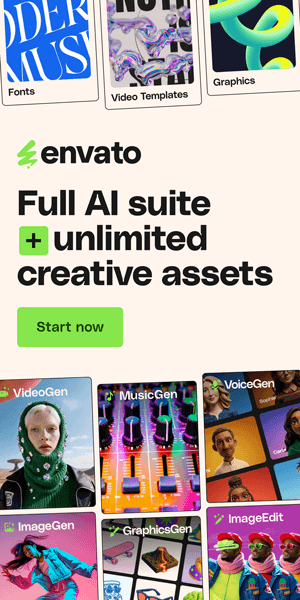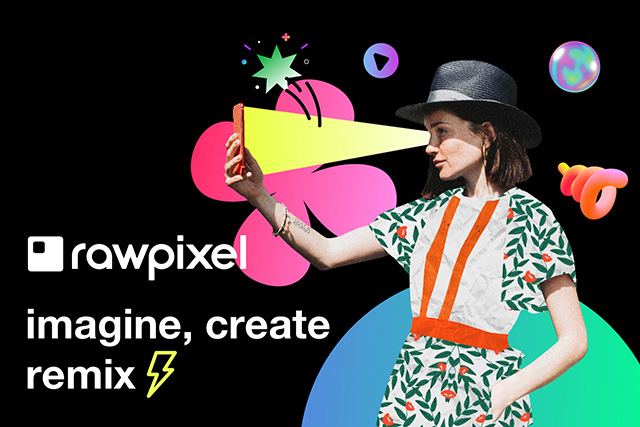Vibrant Nostalgia: A Resurgence of Retro Aesthetics in Graphic Design
In today's fast-paced, constantly evolving digital world, we often find ourselves seeking comfort and familiarity in the past. This yearning for bygone eras has led to a resurgence of retro aesthetics in various aspects of our lives, from fashion and music to, of course, graphic design.
Retro design, characterized by its bold colors, geometric shapes, and hand-drawn illustrations, evokes a sense of nostalgia and playfulness that resonates with people of all ages. It's a style that harkens back to simpler times, reminding us of the carefree days of our youth or the timeless elegance of mid-century modern design.
The resurgence of retro design in graphic design is evident in various forms, from brand identities and product packaging to web design and advertising. Designers are incorporating retro elements into their work to create a sense of authenticity, establish trust with their audience, and add a touch of playfulness to their designs.
The psychological impact of retro design is undeniable. It triggers feelings of nostalgia and warmth, transporting us back to cherished memories and evoking a sense of simpler times. Retro design also conveys authenticity and trust, as it connects with our shared cultural heritage and resonates with a sense of craftsmanship.
In a world saturated with digital trends and fleeting fads, retro design offers a refreshing antidote, a reminder of the enduring power of timeless aesthetics. As we navigate the ever-evolving digital landscape, retro design continues to inspire and influence, reminding us of the enduring power of nostalgia and the timeless appeal of well-crafted design.
Elements of Retro Design
Retro design encompasses a diverse range of visual elements that contribute to its distinctive character and evoke a sense of nostalgia. Let's delve into the key elements that define retro aesthetics in graphic design:
1. Bold Typography
Typography plays a pivotal role in establishing the visual language of retro design. Bold, eye-catching fonts, often with exaggerated features and playful letterforms, are a hallmark of the style. Think of the iconic script fonts used in 1950s advertisements or the chunky block letters associated with 1970s rock posters. Retro typography adds a sense of personality and vibrancy to any design, capturing attention and conveying a sense of authenticity.
2. Vibrant Color Palettes
Retro design is not afraid to embrace bold and contrasting colors, often drawing inspiration from the pop art movement and the psychedelia of the 1960s. Bright shades of red, orange, yellow, and green are frequently employed, creating a sense of energy and excitement. These vibrant color palettes are often used in combination with geometric shapes and hand-drawn illustrations, further enhancing the playful and dynamic nature of retro design.
3. Geometric Shapes
Simple geometric shapes, such as circles, squares, and triangles, are a staple of retro design. These shapes provide a sense of order and balance, while also adding a touch of modernity to the style. Think of the minimalist geometric patterns used in Scandinavian design or the bold geometric shapes associated with Art Deco. The use of geometric shapes in retro design adds a sense of structure and visual interest, making it a versatile and effective design element.
4. Hand-drawn Illustrations
The charm of hand-drawn illustrations is undeniable, and they play a significant role in retro design. Imperfect lines, wobbly curves, and playful characterizations give retro illustrations a sense of warmth and authenticity. They often depict everyday objects, pop culture references, or whimsical creatures, adding a touch of nostalgia and personality to the design. Hand-drawn illustrations are often used in combination with bold typography and vibrant colors, creating a cohesive and engaging retro aesthetic.
5. Vintage Textures
Vintage textures, such as paper grain, halftone patterns, and distressed textures, add a layer of depth and authenticity to retro design. These textures evoke a sense of timelessness and imperfection, reminding us of the analog era of printmaking and photography. They often serve as backgrounds or subtle accents, adding visual interest and enhancing the overall retro aesthetic. Vintage textures are particularly effective when used in combination with hand-drawn illustrations and bold typography.
Applications of Retro Design
Retro design's versatility and nostalgic appeal have made it a popular choice across various design disciplines. Let's explore some of the key applications where retro design is making a significant impact:
1. Branding and Packaging
Retro design is a powerful tool for establishing a brand's identity and creating a memorable presence in the marketplace. By incorporating retro elements into logos, packaging, and marketing materials, brands can convey a sense of authenticity, heritage, and playfulness. Think of the iconic branding of Coca-Cola, with its signature script logo and red-and-white color scheme, or the retro-inspired packaging of Burt's Bees products, with their hand-drawn illustrations and vintage textures
2. Web Design
The digital world is not immune to the allure of retro design. Web designers are increasingly incorporating retro elements into website layouts, color palettes, and typography to create engaging and memorable online experiences. Think of websites like Spotify, with its bold typography and vibrant colors, or the online store of fashion brand Urban Outfitters, with its vintage-inspired layout and hand-drawn illustrations.
3. Advertising and Marketing
Retro design has always been a potent force in advertising and marketing. From vintage print ads to nostalgic television commercials, retro aesthetics have effectively captured consumer attention and evoked emotional connections. Think of the iconic advertising campaigns of brands like Volkswagen and Levi's, or the retro-inspired marketing materials of companies like Apple and Coca-Cola.
4. Editorial Design
The world of magazines, newspapers, and books is also embracing the resurgence of retro design. Retro elements are being used to create visually engaging layouts, add personality to editorial illustrations, and enhance the overall look and feel of publications. Think of magazines like The New York Times Magazine and The Paris Review, with their bold typography and vintage-inspired illustrations, or books like "The Great Gatsby" and "Harry Potter," with their iconic retro cover designs.
Psychological Impact of Retro Design
Retro design's enduring appeal lies not only in its visual aesthetics but also in its profound psychological impact. It taps into our innate human desire for nostalgia, authenticity, and playfulness, creating emotional connections that resonate with people of all ages and backgrounds.
1. Evoke Nostalgia and Positive Emotions
Retro design has the unique ability to transport us back to cherished memories of our past, triggering feelings of nostalgia and warmth. The familiar colors, shapes, and textures of retro design evoke a sense of comfort and familiarity, reminding us of simpler times and carefree moments. These nostalgic associations can foster positive emotions such as happiness, contentment, and a sense of belonging.
2. Establish Authenticity and Trust
In today's world of fleeting trends and superficiality, retro design offers a refreshing reminder of authenticity and heritage. By drawing inspiration from past eras and employing traditional design techniques, retro design conveys a sense of genuineness and craftsmanship. This authenticity can foster trust and credibility with consumers, who appreciate brands that embrace their heritage and remain true to their roots.
3. Add a Touch of Playfulness and Fun
Retro design is often infused with a sense of playfulness and lightheartedness, evoking a childlike wonder and appreciation for simple pleasures. The bold colors, exaggerated shapes, and whimsical illustrations of retro design create a sense of fun and amusement, reminding us to embrace creativity and inject a touch of joy into our daily lives.
4. Appeal to a Wider Audience
The versatility of retro design allows it to appeal to a broad audience, transcending generational boundaries and cultural backgrounds. The shared experiences and cultural references embedded in retro aesthetics create a sense of shared understanding and connection. This universal appeal makes retro design a powerful tool for communication and branding, effectively engaging and resonating with people from all walks of life.
Conclusion
The resurgence of retro aesthetics in graphic design is a testament to its enduring appeal and timeless beauty. It offers a refreshing antidote to the fleeting trends and constant innovation of the digital world, reminding us of the power of nostalgia, authenticity, and playfulness in design.
As we navigate the ever-evolving landscape of graphic design, retro aesthetics will continue to inspire and influence, adding a touch of nostalgia, authenticity, and playfulness to our visual experiences. Its versatility and adaptability will ensure its relevance in the years to come, as designers continue to reimagine and reinterpret the timeless elements of retro design.
Related articles



Tags
Subscribe
Join the Advise Graphics community and get exclusive design resources, tips, and updates delivered straight to your inbox.
Quick links
Copyright
© 2025 Advise Graphics. All rights reserved.
Cop© 2025 Advise Graphics. All rights reserved.











